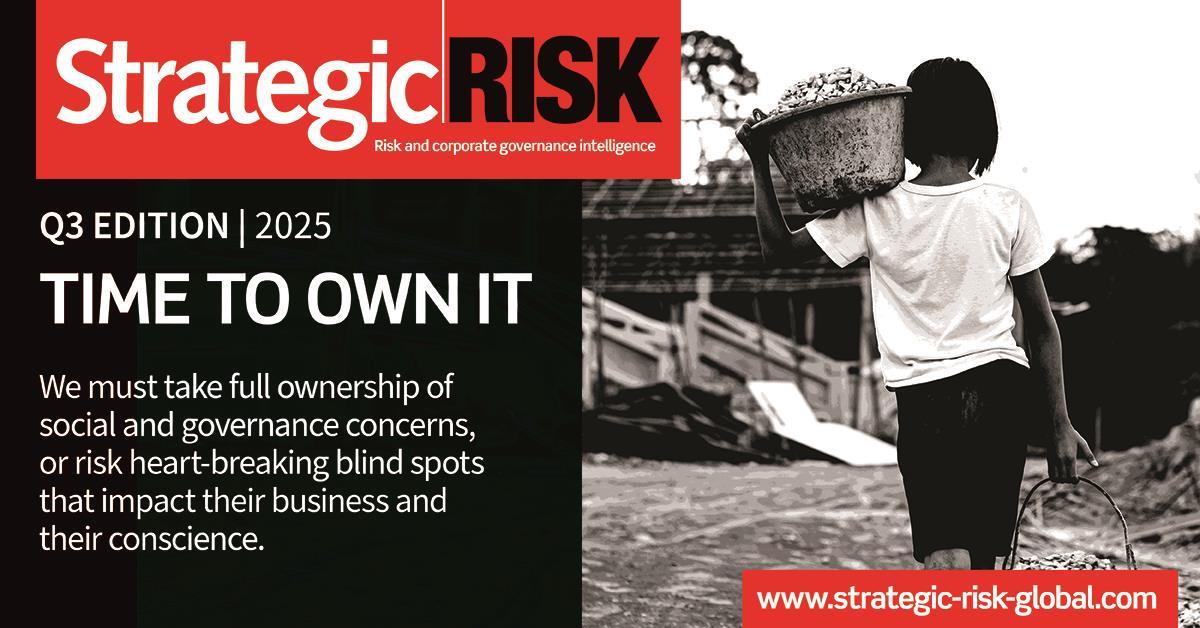New research from WTW reveals how global firms are moving from disruption response to long-term resilience planning, yet many still lack visibility, control and fit-for-purpose cover.
The nature of supply chain risk is changing, with geopolitical instability, digital vulnerabilities and executive oversight emerging as key concerns for global companies.
According to WTW’s 2025 Global Supply Chain Risk Survey, organisations are moving away from short-term disruption management and facing up to deeper systemic issues.

Based on responses from 1,000 senior leaders at companies with over $250 million in annual revenue, the study reveals how cyber risk, reputational threats and board-level engagement are reshaping priorities.
However, insurance solutions are struggling to adapt, and only a small minority of firms say they have full control over their risk landscape.
Cyber climbs the agenda
Cybersecurity has become a primary focus. In 2023, just 5% of respondents ranked cyber as their top concern. This year, that figure has jumped to 16%. One in four rated cyber risk as high, and a further 21% said it was very high. Fewer than 2% considered the threat to be low.
WTW links this shift to both the increasing volume and severity of attacks. “The dramatic rise in concern underscores the increasing frequency and severity of cyber attacks, making businesses more aware of the importance of securing their digital operations,” the report warns.
The findings align with WTW’s wider research into interconnected threats, which classifies cyber as a systemic business risk. With supply chains now spanning multiple tiers and geographies, the potential for digital disruption through third parties is growing rapidly.
Simon Sølvsten, head of organisational resilience research at the WTW Research Network, said: “Supply chains are the backbone of any organisational ecosystem.
“Their complex design, international reach, and broad exposure to risk present significant challenges for organisations in maintaining the necessary understanding and oversight of inherent risks crucial for building efficient organizational resilience, especially as they strive to keep pace with the evolving risk landscape.”
Coverage concerns and pricing pressures
Despite greater awareness, many businesses remain frustrated by the limitations of risk transfer. Non-damage business interruption (BI) and contingent BI insurance have faced criticism for limited availability, unpredictable claims triggers and pricing misalignment.
Hugo Wegbrans, head of corporate risk and broking for Europe at WTW, explained: “The complexity of modern supply chains presents a unique challenge for the insurance industry, where risks must be thoroughly understood and accurately quantified to enable effective diversification and appropriate premium pricing.
“Proper risk quantification is essential to ensure that premiums reflect actual exposures, enhancing acceptable risk profiling, competitiveness, and the overall appeal of the market.”
However, only 8% of companies surveyed said they had complete control over their supply chain risks. At the same time, 63% reported higher-than-expected losses, with 10% saying the financial impact was “much higher than expected”.
Board-level focus intensifies
In 2023, just over a third of firms listed lack of board buy-in as one of their top three risk management challenges. In the latest survey, that number rose sharply to 75%, reflecting growing concern at the highest levels of business.
This shift comes alongside a change in how supply chain threats are perceived. Where short-term operational disruption once dominated, executives are now more focused on long-term strategic impact.
Reputational risk is now the most feared consequence of a supply chain failure, cited by 66.5% of respondents. That is a significant rise from 41% two years earlier. Loss of customer trust (65%) and long-term erosion of market share (49%) are also now seen as greater threats than temporary sales losses.
As a result, more companies are investing in structural improvements. Fifty percent of firms now describe their supply chain approach as strategic, using dual sourcing, inventory buffers and supplier segmentation. Just 5% still rely on reactive crisis management.
Investment in data and digital tools
Firms are also turning to technology to improve risk oversight. Nearly half (46%) said that improved data was the biggest opportunity for supply chain risk management, while 41% now rank digital transformation among their top priorities, up from 31% in 2023.
These investments are beginning to shift the conversation away from disruption response and towards long-term resilience. However, the benefits are not yet fully realised. Only 22% of firms said their resilience had “greatly improved” over the past two years, down from 28% in WTW’s previous survey.
“Navigating these challenges is no small feat,” said Sølvsten. “Organizations must be proactively anticipating, mitigating and managing a growing range of potential disruptions.”
The road ahead
The report concludes that global supply chains are now more interdependent and exposed than ever, but the tools used to manage them have not kept pace. Gaps in visibility, data quality and insurance fit remain persistent barriers.
Risk managers, in particular, are being called on to lead conversations around proactive modelling, contractual safeguards and fit-for-purpose risk transfer. The challenge is no longer just to react but to anticipate and act — aligning operational resilience with executive priorities and long-term strategic value.








No comments yet